Even
as thousands of residents pondered the implications of the nuclear
disaster in Fukushima Prefecture last year, Japanese government
officials took little notice of up-to-the-minute high radiation
measurements provided by the U.S. Energy Department. (June 19)
[more]
Radioactive cesium spread 600 km in waters off Fukushima
April 26, 2012Radioactive cesium was detected in the ocean as far as 600 kilometers to the east of the crippled Fukushima No. 1 nuclear power plant, scientists said, in amounts that reached 100 times pre-accident levels. (File photo)
必須確實解決問題 (如果可以 其實可能無解) 全系統的
想利用人民的愛國心是誤導 荒唐
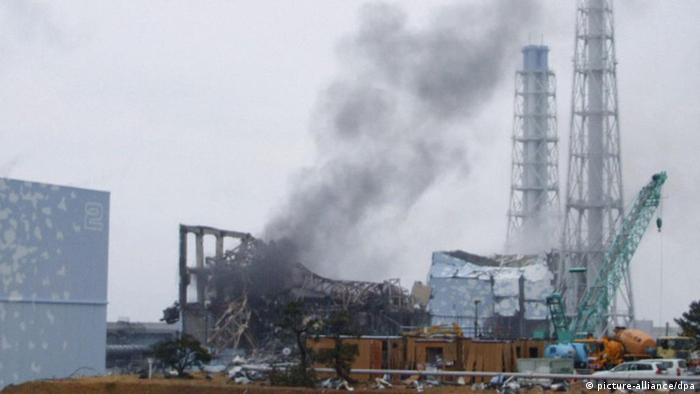
Reports from Japanese journalists confirm what anti-nuclear
activists fear: the situation in Fukushima is much worse than the
government is letting on - and the Japanese people are being misled.
The Japanese government doesn't seem to be doing a good job providing
information about the situation in Fukushima - at least that's how Junko
Naggai sees it. That's why she created an information site on the web.
Though the 78-year-old is a long-time German resident, she has decided
to create her website in Japanese language.
"I didn't know it would be so bad, that there would be so little information. That was a bit of a shock to me," Naggai says in Berlin.
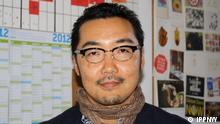 Japanese Journalist Takashi Uesugi
The former TV moderator was invited to a discussion by the Lutheran
Church and various NGOs in Berlin to talk about the Japanese
government's handling of the nuclear disaster in Fukushima. Among other
things, he explains how radiation measurements in Fukushima are
manipulated.
Japanese Journalist Takashi Uesugi
The former TV moderator was invited to a discussion by the Lutheran
Church and various NGOs in Berlin to talk about the Japanese
government's handling of the nuclear disaster in Fukushima. Among other
things, he explains how radiation measurements in Fukushima are
manipulated.
"The top surface is removed and the area is cleaned with water before the Geiger counters are used," he says.
Disinformation
Considering the current levels of radiation, the decision of the Japanese government to reopen parts of evacuated areas is something completely irresponsible, says physicist and head of the Society for Radiation Protection Sebastian Pflugbeil.
"It is reckless. Those people should travel to Chernobyl and see how it looks after 26 years."
After the nuclear meltdown in the Ukraine in 1986, the government also made efforts to decontaminate the areas and also to get rid of the affected layers of topsoil. But the endeavor proved to be impossible.
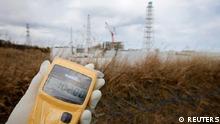 According to Uesugi, radiation measurements are manipulated
In Japan, the debris left behind in the tsunami adds another dimension to the problem.
According to Uesugi, radiation measurements are manipulated
In Japan, the debris left behind in the tsunami adds another dimension to the problem.
"There is a lot of debris. They are trying to spread it out and burn it in some prefectures. That is creating further problems because the radioactivity gets out and spreads."
Pflugbeil thinks the Japanese government's strategies to get over the catastrophe by appealing to peoples' patriotism is absurd. On his last trip to the East Asian country, he took a picture at a beauty contest - with support from the minister for agriculture, a contest was held to find the prettiest student who ate only food from the Fukushima region.
The power of the nuclear lobby
Tamahashi Uesugi criticizes the strong linkages between politics, the nuclear industry and the media. He says politicians who lose their offices are often offered a job with the energy company Tepco, which operates three nuclear power plants in Japan - one of which is the stricken Daiichi plant in Fukushima. Uesugi believes with all the interdependencies, the system is impenetrable. Furthermore, such are the government's efforts to play down the nuclear disaster, Uesugi points out, that whoever criticizes it is shunned out of the system.
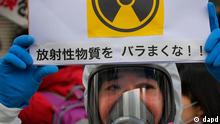 The number of Japan's anti-nuclear activists is growing
It is not only the Japanese government, but also international
organizations - the International Atomic Energy Agency (IAEA) and the
World Health Organization (WHO) - which are also playing down the
effects of radiation exposure. According to "official" figures, only 50
people died as a result of the nuclear disaster in Chernobyl.
The number of Japan's anti-nuclear activists is growing
It is not only the Japanese government, but also international
organizations - the International Atomic Energy Agency (IAEA) and the
World Health Organization (WHO) - which are also playing down the
effects of radiation exposure. According to "official" figures, only 50
people died as a result of the nuclear disaster in Chernobyl.
"But our experience tells a different story," says the spokesperson for the organization International Physicians for the Prevention of Nuclear War (IPPNW), Angelika Wilmen.
"Effects of nuclear radiation include miscarriages, birth defects, genetic defects among newborns, and a cancer.“
The extent of the side-effects are showing up now, 25 years later; so the number of casualties should be closer to a million, who either still are or have suffered the long-term effects of radiation.
Demonstrations against Ooii
Of Japan's 54 nuclear power plants, 15 of them are currently shut down due to damage. All of the others, aside from one, are being inspected. But to the dismay of the anti-nuclear protesters, it does not appear as though they will all be kept off the grid. The Japanese government wants to get the nuclear power plant in Ooii up and running again. But the governor of Fukui prefecture has to agree first, Takashi Uesugi, a journalist, points out.
He says according to Twitter, around 60,000 people gathered outside the government building in Tokyo out of protest. "But the Japanese media don't talk about such protests," he complains.
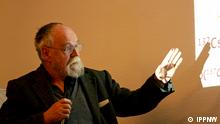 Sebastian Pflugbeil, head of the Society for Radiation Protection
Nonetheless, opposition to nuclear power is growing. "We have even
been noticing such tendencies in our area of Japan, which tends to be
more conservative," Wilmen says.
Sebastian Pflugbeil, head of the Society for Radiation Protection
Nonetheless, opposition to nuclear power is growing. "We have even
been noticing such tendencies in our area of Japan, which tends to be
more conservative," Wilmen says.
Bound to get worse?
Around 80 percent of the radiation in Fukushima has leaked out around the sea instead of into residential areas. But that could change soon. Pflugbeil is not only worried about the large amounts of radioactive material that continues to flow into the ocean. He says developments in reactor number 4 are a cause for worry.
"There is a large bathtub there in which 1,500 old fuel rods are kept for cooling."
If they can't be kept cool, the fuel rods will self-destruct, he explains. "That would release a huge amount of radiation. According to Japanese experts, if that were to happen, they would have to evacuate an area of up to 250 kilometers. That means Tokyo would also have to be evacuated."
Junko Nagai and five others are about to go online again. They want to publish the latest information as soon as possible on their Japanese website.
Author: Ulrike Mast-Kirschning / sb
Editor: Shamil Shams
"I didn't know it would be so bad, that there would be so little information. That was a bit of a shock to me," Naggai says in Berlin.
 Japanese Journalist Takashi Uesugi
Japanese Journalist Takashi Uesugi"The top surface is removed and the area is cleaned with water before the Geiger counters are used," he says.
Disinformation
Considering the current levels of radiation, the decision of the Japanese government to reopen parts of evacuated areas is something completely irresponsible, says physicist and head of the Society for Radiation Protection Sebastian Pflugbeil.
"It is reckless. Those people should travel to Chernobyl and see how it looks after 26 years."
After the nuclear meltdown in the Ukraine in 1986, the government also made efforts to decontaminate the areas and also to get rid of the affected layers of topsoil. But the endeavor proved to be impossible.
 According to Uesugi, radiation measurements are manipulated
According to Uesugi, radiation measurements are manipulated"There is a lot of debris. They are trying to spread it out and burn it in some prefectures. That is creating further problems because the radioactivity gets out and spreads."
Pflugbeil thinks the Japanese government's strategies to get over the catastrophe by appealing to peoples' patriotism is absurd. On his last trip to the East Asian country, he took a picture at a beauty contest - with support from the minister for agriculture, a contest was held to find the prettiest student who ate only food from the Fukushima region.
The power of the nuclear lobby
Tamahashi Uesugi criticizes the strong linkages between politics, the nuclear industry and the media. He says politicians who lose their offices are often offered a job with the energy company Tepco, which operates three nuclear power plants in Japan - one of which is the stricken Daiichi plant in Fukushima. Uesugi believes with all the interdependencies, the system is impenetrable. Furthermore, such are the government's efforts to play down the nuclear disaster, Uesugi points out, that whoever criticizes it is shunned out of the system.
 The number of Japan's anti-nuclear activists is growing
The number of Japan's anti-nuclear activists is growing"But our experience tells a different story," says the spokesperson for the organization International Physicians for the Prevention of Nuclear War (IPPNW), Angelika Wilmen.
"Effects of nuclear radiation include miscarriages, birth defects, genetic defects among newborns, and a cancer.“
The extent of the side-effects are showing up now, 25 years later; so the number of casualties should be closer to a million, who either still are or have suffered the long-term effects of radiation.
Demonstrations against Ooii
Of Japan's 54 nuclear power plants, 15 of them are currently shut down due to damage. All of the others, aside from one, are being inspected. But to the dismay of the anti-nuclear protesters, it does not appear as though they will all be kept off the grid. The Japanese government wants to get the nuclear power plant in Ooii up and running again. But the governor of Fukui prefecture has to agree first, Takashi Uesugi, a journalist, points out.
He says according to Twitter, around 60,000 people gathered outside the government building in Tokyo out of protest. "But the Japanese media don't talk about such protests," he complains.
 Sebastian Pflugbeil, head of the Society for Radiation Protection
Sebastian Pflugbeil, head of the Society for Radiation ProtectionBound to get worse?
Around 80 percent of the radiation in Fukushima has leaked out around the sea instead of into residential areas. But that could change soon. Pflugbeil is not only worried about the large amounts of radioactive material that continues to flow into the ocean. He says developments in reactor number 4 are a cause for worry.
If they can't be kept cool, the fuel rods will self-destruct, he explains. "That would release a huge amount of radiation. According to Japanese experts, if that were to happen, they would have to evacuate an area of up to 250 kilometers. That means Tokyo would also have to be evacuated."
Junko Nagai and five others are about to go online again. They want to publish the latest information as soon as possible on their Japanese website.
Author: Ulrike Mast-Kirschning / sb
Editor: Shamil Shams
沒有留言:
張貼留言